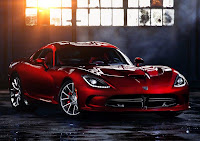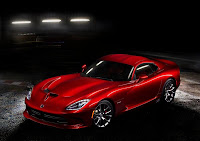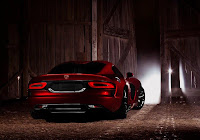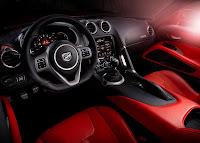- Mercedes-Benz C63 AMG Coupe, 2012
In the shape of the new Mercedes-Benz C63 AMG coupé, Mercedes-AMG is presenting an autonomous, high-performance car that appeals to all the senses. Distinctive design is combined with a powerful drive package and dynamic handling. The new coupé joins the successful C-Class AMG family, which includes the classic saloon as well as the practical estate model. The Mercedes-Benz C63 AMG coupé also enhances the AMG family of coupés: in addition to the CLS63 AMG and the CL63 AMG, Mercedes-AMG GmbH is now able to offer another dream car featuring a high-performance eight-cylinder engine. The market launch commences in July 2011. Looking particularly attractive is the "Edition 1" of the Mercedes-Benz C63 AMG coupé, available from launch with exclusive equipment.
The AMG 6.3-litre V8 engine in the Mercedes-Benz C63 AMG coupé delivers a maximum output of 336 kW (457 hp) and peak torque of 600 Newton metres for outstanding performance: the coupé is capable of accelerating from 0 to 100 km/h in 4.5 seconds and the top speed is 250 km/h (electronically limited). With this kind of specification, the new two-door vehicle is set to take the lead in its segment.
The new coupé variant benefits from all the technology updates that have been adopted on the C63 AMG saloon and estate models. Deploying the AMG SPEEDSHIFT MCT 7-speed sports transmission with "Controlled Efficiency" mode as standard and a new power steering pump reduces fuel consumption: the combined NEDC figure for the Mercedes-Benz C63 AMG coupé is 12.0 l/100 km.
AMG performance package for a maximum output of 358 kW (487 hp)
This fuel consumption figure also applies to the performance version generating 358 kW (487 hp) courtesy of the AMG performance package. Available as an option, this package improves acceleration from 0 to 100 km/h to 4.4 seconds, with technology transferred from the SLS AMG responsible for the 22 kW (30 hp) increase in output. The forged pistons, connecting rods and lightweight crankshaft adopted from the gull-wing model's high-tech drive system save three kilograms in weight. This reduces inertia and enhances the agility and responsiveness of the high-revving, eight-cylinder naturally aspirated engine. Visually, the AMG performance package can be identified by the variable intake manifold in titanium grey under the bonnet, the AMG high-performance braking system with composite front discs and red painted brake callipers all round, the carbon fibre spoiler lip on the boot lid and the AMG performance steering wheel in nappa leather with an Alcantara grip area.
AMG SPEEDSHIFT MCT 7-speed sports transmission as standard
The AMG SPEEDSHIFT MCT 7-speed sports transmission provides direct and dynamic power delivery. Rather than using a torque converter, it has a compact, wet start-off clutch which reduces the losses associated with a conventional automatic transmission and thereby significantly lowers fuel consumption. Another major factor is the Controlled Efficiency "C" mode: by providing early, comfortable upshifts while maintaining the lowest possible engine speed and "soft" accelerator characteristics, the AMG SPEEDSHIFT MCT 7-speed sports transmission helps the driver achieve better fuel economy figures.
The exclusive Mercedes-AMG power transmission is compelling because it offers a high level of variability and inspiring dynamism. The "S", "S+" and "M" modes deliver increased agility and are selected via the new rotary control established on the SLS AMG. Faster gear changes and higher revs add to the driver's emotional experience and double-declutching is active in "S", "S+" and "M" modes, boosting enjoyment further. Gear changes in the "S+" and "M" modes take just 100 milliseconds. The RACE START function allows the driver to explore the vehicle's full acceleration capability.
Specific AMG sports suspension for great dynamism and ride comfort
It is not just the engine and power transmission which influence the Mercedes-Benz C63 AMG coupé's dynamic quality - the AMG sports suspension and AMG high-performance braking system are also key here. Departing from the standard suspension, the top-of-the-range AMG model has a separate three-link front suspension, a reinforced multi-link independent rear suspension and a wider track all round. The stiffer elastokinematics, the autonomous axle kinematics with more negative camber all round and anti-roll bars with a larger cross-section result in higher agility and greater lateral acceleration. Specially adjusted spring and damper rates have optimised both the responsiveness of the suspension as well as the road roar and tyre vibration characteristics.
The AMG speed-sensitive sports steering with a direct ratio (13.5 : 1) affords excellent road feel and contributes to the agile, direct driving experience. This is complemented perfectly by three-stage ESP: the Electronic Stability Program enables three individual control strategies to be accessed at the touch of a button. The driver can use the ESP switch on the centre console to choose between ESP ON, ESP SPORT and ESP OFF modes. The AMG high-performance braking system with internally ventilated and perforated discs all-round ensures outstanding responsiveness, short stopping distances and high resistance to fading.
Confident and athletic: the design of the Mercedes-Benz C63 AMG coupé
Visually, the Mercedes-Benz C63 AMG coupé has a confident, athletic presence that is reminiscent of the high-performance SL63 AMG roadster. All AMG-specific design features have been skilfully combined with classic coupé proportions. This compact two-door car has an exciting low profile, powerful shoulderline and a narrow C-pillar. Other key styling aspects are the short overhang, long bonnet, steeply raked windscreen and long, stretched out roof.
As is typical for AMG, the car has a striking, arrow-shaped front section with the new AMG front apron including a lower cross strut painted in high-gloss black, AMG-specific LED daytime running lights and side air outlets. The large Mercedes star sits on a wing-shaped transverse louvre in the new radiator grille and, in conjunction with the modified aluminium bonnet with its powerdomes, underlines the impression of masculinity that the car exudes. Another eye-catching feature is the new clear-lens headlamps, especially when the optional Intelligent Light System (ILS) is also specified.
The wide front wing bearing the "6.3 AMG" legend, AMG side sill panels and the new 5-twin-spoke AMG light-alloy wheels painted in titanium grey with a high-gloss finish dominate the side view. Good contact with the road is provided by the wide 235/40 R 18 (front) and 255/35 R 18 (rear) tyres.
At the rear, the unique AMG rear apron has a distinctive, black diffuser insert and three pronounced diffuser fins. The two chromed twin tailpipes of the AMG sports exhaust system also attract attention.
High-quality, dynamic interior
On opening the door of the Mercedes-Benz C63 AMG coupé, passengers enter a specially designed, dynamic interior of quality. The dashboard instrument panel with integrated screen immediately recalls the new CLS63 AMG. Three sporty, separate round instruments provide information on speed, engine rpm, fuel level and coolant temperature. Other display options are incorporated into the AMG main menu. This can be accessed via the multifunctional buttons on the steering wheel. Located in the middle of the speedometer, the colour, three-dimensional TFT display welcomes the driver by showing an AMG logo when the ignition is switched on.
The specially shaped AMG performance steering wheel has been adopted from the CLS63 AMG. It has flattened top and bottom sections, a metallic trim element, grip areas which are trimmed in perforated leather, and aluminium shift paddles. Trim elements in high-gloss, black piano lacquer on the dashboard instrument panel, centre console and doors emphasise high quality. Situated on the centre console is the rotary control for selecting the C, S, S+, M transmission modes and RACE START.
The new AMG sports seats with integral head restraints, EASY-ENTRY system and high-quality AMG badges have a sporty design with horizontal seamlines. Combined ARTICO/DINAMICA black upholstery comes as standard. DINAMICA is a new type of breathable man-made fibre which is pleasant to the touch and is characterised by low emissions and a high degree of lightfastness. The side bolsters of the AMG sports seats are covered in ARTICO while the centre panels of the seat cushions are upholstered with DINAMICA. The Mercedes-Benz C63 AMG coupé is a fully fledged four-seater with the rear seats featuring the same style of horizontal seamlines as the AMG sports seats. To enlarge the luggage compartment, the backrests in the rear can each be folded down as standard.
Available as an option, designo leather appointments give the interior a particularly exclusive character: four single colours and three two-tone combinations are available. These can also be complemented with "extended black designo leather appointments" for the top section of the dashboard.
Other attractive optional appointments are also exclusively available for the Mercedes-Benz C63 AMG coupé from the AMG Performance Studio:
- AMG five-spoke light-alloy wheels, painted in titanium grey with a high-gloss finish, with 235/40 R 18 (front) and 255/35 R 18 (rear) tyres
- AMG multi-spoke light-alloy wheels, painted in titanium grey with a high-gloss finish, with 235/35 R 19 (front) and 255/30 R 19 (rear) tyres
- AMG multi-spoke light-alloy wheels, painted in matt black with a high-gloss finish on the rim flange, with 235/35 R 19 (front) and 255/30 R 19 (rear) tyres
- AMG Exterior Carbon Fibre package
- AMG rear axle differential lock
- AMG trim elements in carbon fibre/high-gloss black piano lacquer
- Illuminated AMG door sill panels
- AMG floor mats
High level of safety and new assistance systems
With seven airbags as standard, belt tensioners and belt-force limiters for all seats, the Mercedes-Benz C63 AMG coupé has extensive safety features. The airbags, which can deploy in milliseconds in the event of an accident, include front airbags and sidebags for the driver and front passenger, a kneebag on the driver's side, and windowbags. The side protection system - comprising windowbag and sidebag - optimises the level of protection afforded to individual parts of the body.
With a number of driving assistance systems ranging from ATTENTION ASSIST drowsiness detection to DISTRONIC PLUS proximity control, the Mercedes-Benz C63 AMG coupé provides a comprehensive level of driver support and protection. The assistance systems are familiar from the flagship S-Class and are based on the latest radar, camera and sensor technology. They cover frequent accident causes such as driving too closely, fatigue and darkness.
Assistance systems at a glance:
- ABS anti-lock braking system (standard)
- Adaptive Highbeam Assist (optional)
- Active Lane Keeping Assist (optional)
- Active Blind Spot Assist (optional)
- ATTENTION ASSIST (standard)
- DISTRONIC PLUS including BAS PLUS (optional)
- Electronic Stability Program ESP (standard)
- Headlamp Assist (standard)
- Speed Limit Assist (optional)
- Intelligent Light Systems ILS (optional)
- PARKTRONIC including Parking Guidance (optional)
- PRE-SAFE (optional)
- PRE-SAFE Brake (optional)
- Lane Keeping Assist (optional)
- Cruise control with SPEEDTRONIC variable speed control (standard)
- Blind Spot Assist (optional)
The new telematics generation featuring enhanced ease of operation
The Mercedes-Benz C63 AMG coupé also features a new telematics generation which received its global premiere on the saloon and estate models. Major new features include greater operating convenience, larger displays, phone book transfer, display of SMS messages, wireless music reproduction via Bluetooth and a USB interface now accommodated in the centre armrest.
The multimedia system COMAND Online now provides internet access for the first time. When the car is stationary, customers are able to browse freely or surf to a Mercedes-Benz Online service whose pages load particularly rapidly and are also easy to use while on the move. The integrated services include weather information and a special destination search via Google, as well as the option of downloading a route that has been previously configured on a PC using Google Maps and sent to the car. The navigation system of COMAND Online also has added functions. New features include a 3D display with plastic city views. Also new: routes covered can be recorded and repeated later, specific personal destinations can be saved or imported via an SD card and four alternative routes can be displayed on the navigation map, one of them a particularly economical variation.
The Becker MAP PILOT makes a low-cost navigation function, which can also be retrofitted, available for the entry-level Audio 20 CD radio. Its advantages over aftermarket solutions include integrated operation via the central controls and the Audio 20 display, a concealed location in the glove compartment and updating via an internet portal.
Specially designed, premium quality "Edition 1"
As for the CLS63 AMG, an "Edition 1" of the new C63 AMG coupé is also available. The Edition 1 features exciting, premium quality interior details that have been specially designed: the AMG sports seats, door centre panels and armrests come in black designo leather with contrasting porcelain seams on the sports seats. To match this, the trim parts have a porcelain piano-lacquer look and the two-tone AMG performance steering wheel sets black nappa leather off with a lower section in porcelain designo leather. An "Edition 1" badge on the trim indicates this version's singularity. AMG 5-twin-spoke light-alloy wheels painted in matt black make the Mercedes-Benz C63 AMG Coupé Edition 1 look equally special on the outside. As an option, the standard metallic paintwork can be swapped for a matt finish in designo magno night black or diamond white metallic BRIGHT.




















































